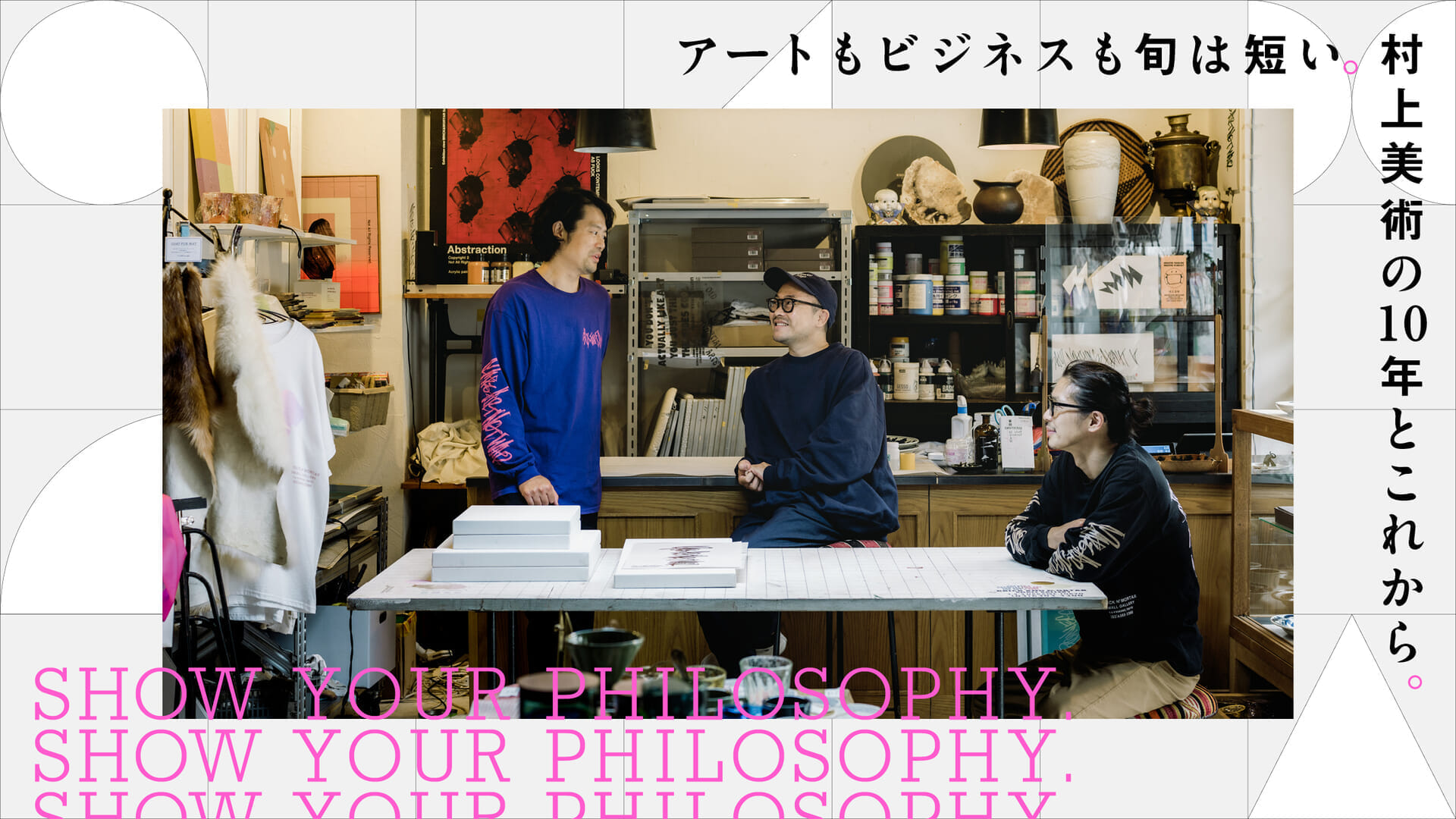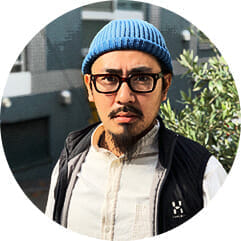
PROFILE
Left: Atsushi Murakami (younger brother)
Ltd., where he was mainly in charge of planning, sales, and distribution for "AMABURO. Ltd. where he established the company with his brother, Shu. His humorous and quintessential Kansai accent is very impressive.
Middle: Shu Murakami (Brother)
. is an artist and representative of Murakami Art Co. . His style ranges from silkscreening, painting, calligraphy, and more. . It all started with his work. . He spends his days sweating at Kaoru Uno's UNO DOJO.
Right: Yuya Suzuki
Art Director of Murakami Art Co. He also has a wealth of knowledge about products such as pottery. Under the influence of Mr. Zhou, he started Brazilian Jiu-Jitsu.
Philosophy of artist Shu Murakami ,.

. I understand that Murakami Art Co., Ltd. began with your work, so I would like to start by asking you about Shu Murakami as an artist. First of all, when I saw your work, I found the graphics and colors to be very appealing.
Shu Murakami ("Shu"): I think the graphic aspect is my strength. . in terms of composition, I think I am different from ordinary painters.
You do a lot of silk screen works, is that because you like them?
Zhou: I was doing graphic design for apparel when I started my job, and I used to do silkscreen printing of T-shirts myself. . just like using a pencil and ruler when drawing.

Do you sometimes draw by hand with a pencil?
Zhou: . it happens a lot. . because I originally wrote in pencil. (and brings a sketchbook from the back of the store)

Atsushi Murakami ( , Atsushi): My greatest achievement was filing these (laughs). I used to throw them away.
I have an image of calligraphy. Have you always been interested in letters?
Zhou: Calligraphy is a recent thing. I have always been interested in words. I had a complex about the letters I drew, but Mr. Kamiyama (Ryuji), with whom I collaborated on an exhibition, drew quickly and energetically with tagging. I thought, "Pretty doesn't matter. I thought it would be good if I tried to make it into a shape, and I thought it would be good, so I started to draw.

On the left is painted "MAKE ART NOT WAR" and on the right "POSITIVE THINKING, POSITIVE MINDSET".
Is the meaning of the words important?
Zhou: . it's important. The words here, "MAKE ART NOT WAR," are very important this year. The phrase "POSITIVE THINKING, POSITIVE MINDSET" was created at the time of the self-restraint in Corona. I am an optimistic person, so I thought that if Corona had been held, I would have been fine... but I thought that many people would have been in agony. When I posted the "POSITIVE..." on Instagram, I received many inquiries asking if I could print the words on T-shirts. I printed it on as many T-shirts as I had and sent them to stores I knew. They sold out in a matter of minutes. I was so happy to see how happy they were that I kept doing this during the period of self-restraint. At the time, my mood would rise and fall with the news about Corona, so I would create colors according to my mood at the time.

. Talking about colors, you have a very unique color palette, don't you? How did you cultivate it?
Zhou: Perhaps I inherited some of it from my mother. . When I was a child, my mother praised me a lot for making paints. Even now, I spend a lot of time making colors. I think that color is an emotion.
Atsushi: You have always said a lot about my sense of color.
Zhou: I did an event with Toshio Matsuura, formerly of U.F.O., for his radio show "Tokyo Moon" (Inter FM 897). I am still working on a project where I present a piece of work based on the inspiration I received from Matsuura's playlist, one piece a week.
A work a week is quite a fast pace.
Zhou: I've decided to keep at it for a year. Work is important for the work we receive, but it is also important to set assignments and do them in a lighthearted manner. . As I get older, I am asked to do more and more work, but there is a part of me that is not satisfied with just the work I receive. . However, there is a part of me that is not satisfied with just the work I receive. I don't know what the outcome will be, but I am looking forward to seeing what will happen in the future, without any profit or loss.
Atsushi: . this four-color piece also had a great response, didn't it?
Zhou: . you had the Black Lives Matter issue. . At that time, I decided to interpret the issue properly in my own way, rather than being emotionally affected by the information. In researching various racial issues, I came to the conclusion that no matter how many rules prohibit discrimination, it is difficult to completely eliminate discrimination. That's how deep-rooted the problem is, right? . That is why I created this work, in which I painted the four skin colors and showed them coexisting within a single canvas. Coexistence and mutual recognition. I thought it was possible to depict a deep theme even with only four colors.
. In the case of contemporary art, there are many works that have a strong concept. What motivates you to create art?
Zhou: . I think it is a kind of mission to present what I am living and feeling now.









